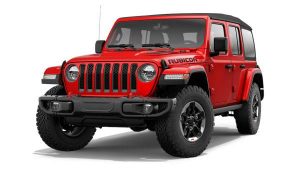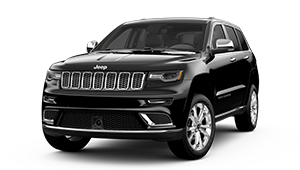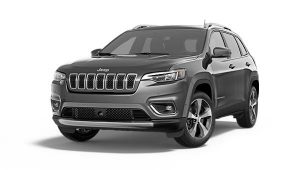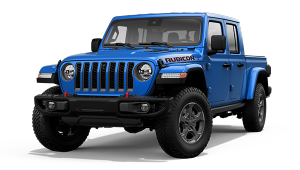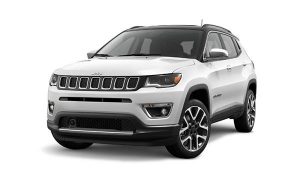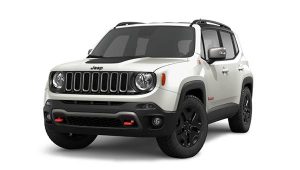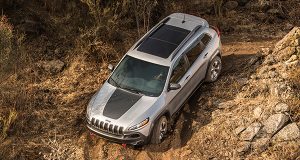DRIVE ON ANY TERRAIN
Not all 4x4s are created equal. Jeep® Brand vehicles are designed and tested in some of the most inhospitable locations on the planet so you can feel confident when driving in a rain or snow storm or when off-roading with like-minded friends. Choose an all-weather-capable Jeep Brand 4x4 system to master any terrain and help feed your passion for adventure.
OUTSTANDING 4x4 TECHNOLOGY
It should come as no surprise that the Jeep® Brand is one of the world leaders in 4x4 technology—it’s the backbone of the brand. Our range of sophisticated 4x4 systems lets you find your own way up, down, through or around almost anything. You can trust the Jeep Brand with its 75-plus years of 4x4 mastery to help you tackle anything Mother Nature sends your way.
OFF-ROAD DIFFERENTIALS
FRONT SWAY BAR DISCONNECT SYSTEM
SKID PLATES
ROCK RAILS
BODY-ON-FRAME DESIGN
DANA® 44 HEAVY-DUTY SOLID AXLES
4x4 VEHICLES
Capability is at our core. Choose a Jeep® Brand 4x4 and you can rest assured your vehicle will live up to its tough-to-the-core reputation. Jeep Brand engineers tirelessly torture test vehicles in some of the most brutal environments known to mankind so that you can confidently hit the trails or maneuver through potholed streets on your way to the next big thing.
GRAND CHEROKEE
COMPASS
WRANGLER
RENEGADE
CHEROKEE
GRAND CHEROKEE 4x4 SYSTEMS
The Jeep® Grand Cherokee has four proven available 4x4 systems that can tackle all weather conditions. The simple-to-use Quadra-Trac I® System is a great solution for most folks. The Quadra-Trac II® System offers low-range capability. The Quadra-Drive® II System offers tremendous off-road capability and the Quadra-Trac® SRT® 4x4 System delivers the ultimate in street and track performance.
Quadra-Drive® II 4x4 System with Rear Electronic Limited-Slip Differential
Quadra-Trac I® 4x4 System
Quadra-Trac II® 4x4 System
Quadra-Trac® SRT® 4x4 System
COMPASS 4x4 SYSTEMS
The Jeep® Compass has two available 4x4 systems that can take on any weather condition. The Jeep Active Drive 4x4 System covers all the bases for everyday driving. The Compass Trailhawk® with the standard Jeep Active Drive Low 4x4 System is the most capable compact SUV ever. Combined with the Selec-Terrain® Traction Management System, you have Best-in-Class 4x4 capability.
Jeep® Active Drive 4x4 System
Jeep® Active Drive Low 4x4 System
WRANGLER 4x4 SYSTEMS
Wrangler, the Go Anywhere. Do Anything.® icon of the Jeep® Brand, is supremely ready for your next adventure. The emotions you experience in an open-air Wrangler are indescribable. Just ask someone who owns one. The Wrangler with a standard 4x4 system can carry you to your quiet place in the woods or to your secret spot by the rolling river.
Command-Trac® 4x4 System
Rock-Trac® 4x4 System
RENEGADE 4x4 SYSTEMS
The Jeep® Renegade has two innovative available 4x4 systems that both feature a rear axle disconnect system to seamlessly switch between two-wheel and four-wheel drive. Both Jeep Active Drive Systems can keep you moving forward, even when just one wheel has traction on the ground. Renegade is ready to grab on and keep you moving forward.
Jeep® Active Drive 4x4 System
Jeep® Active Drive Low 4x4 System
CHEROKEE 4x4 SYSTEMS
Cherokee has three proven available 4x4 systems that can tackle all weather conditions. The simple-to-use Jeep® Active Drive I is a solid system for virtually any situation, the Jeep Active Drive II System provides low-range capability and the Jeep Active Drive Lock offers tremendous off-road capability.
Jeep® Active Drive I 4x4 System
Jeep® Active Drive II 4x4 System
Jeep® Active Drive Lock 4x4 System
JEEP® LIFE
Owning a Jeep® Brand 4x4 is living an adventure every day.

